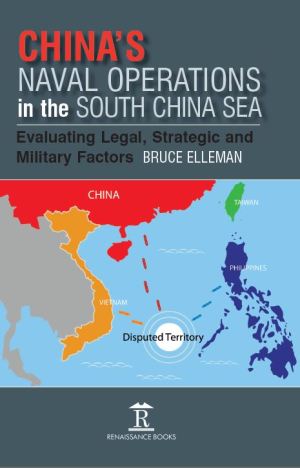Preface
Acknowledgements
List of Maps and Graph
List of Acronyms
Introduction: Evaluating China’s Maritime Strategy in the South China Sea
1. The Early History of the South China Sea Disputes
2. China’s Maritime Territorial Disputes with Vietnam
3. China’s Spratly-KIG Maritime Dispute with the Philippines
4. China’s Continental Shelf Dispute with Malaysia
5. China’s Energy Resources Dispute with Brunei
6. China’s Natuna Island Fishing Dispute with Indonesia
7. China’s Sovereignty Disputes with Taiwan
8. The United States as the South China Sea Maritime Arbiter
Conclusions: China’s Contemporary and Future Maritime Strategy in the SCS
Appendix A: Timeline
SUPPORTING DOCUMENTS:
Document 1: Sino-French Tonkin Treaty, 26 June 1887
Document 2: Cairo Declaration, 1 December 1943
Document 3: Potsdam Proclamation, 26 July 1945
Document 4: Treaty of Peace with Japan, 8 September 1951
Document 5: Treaty of Peace between the Republic of China and Japan, 28 April 1952
Document 6: U.S.-ROC Mutual Defense Treaty, 2 December 1954 (ratified 1955)
Document 7: Formosa Resolution, 1955
Document 8: Declaration on China’s Territorial Sea, 4 September 1958
Document 9: Prime Minister Pham Van Dong’s Letter, 14 September 1958
Document 10: Shanghai Communiqué, 28 February 1972
Document 11: Joint Communiqué on the Establishment of Diplomatic Relations between the
People’s Republic of China and the United States of America, 16 December 1978
Document 12: Taiwan Relations Act, 10 April 1979
Document 13: Joint Communiqué on the Question of Arms Sales to Taiwan, 17 August 1982 24
Document 14: Law on the Territorial Sea and the Contiguous Zone, 25 February 1992
Document 15: 1992 ASEAN Declaration on the South China Sea, 22 July 1992
Document 16: United Nations Convention on the Law of the Sea, PART V, Exclusive Economic Zone,
in force since 14 November 1994
Document 17: A concurrent resolution expressing the sense of Congress regarding missile tests and military exercises by the People’s Republic of China, 21 March 1996
Document 18: Law on the Exclusive Economic Zone and the Continental Shelf of the PRC, 26 June 1998
Document 19: 2002 Declaration on the Conduct of Parties in the South China Sea, 4 November 2002 27
Document 20: Anti-Secession Law adopted by NPC, 14 March 2005
Document 21: Cross-Straits Economic Cooperation Framework Agreement, 29 June 2010
Document 22: In the Matter of the South China Sea Arbitration, 12 July 2016
Selected Bibliography
Index

